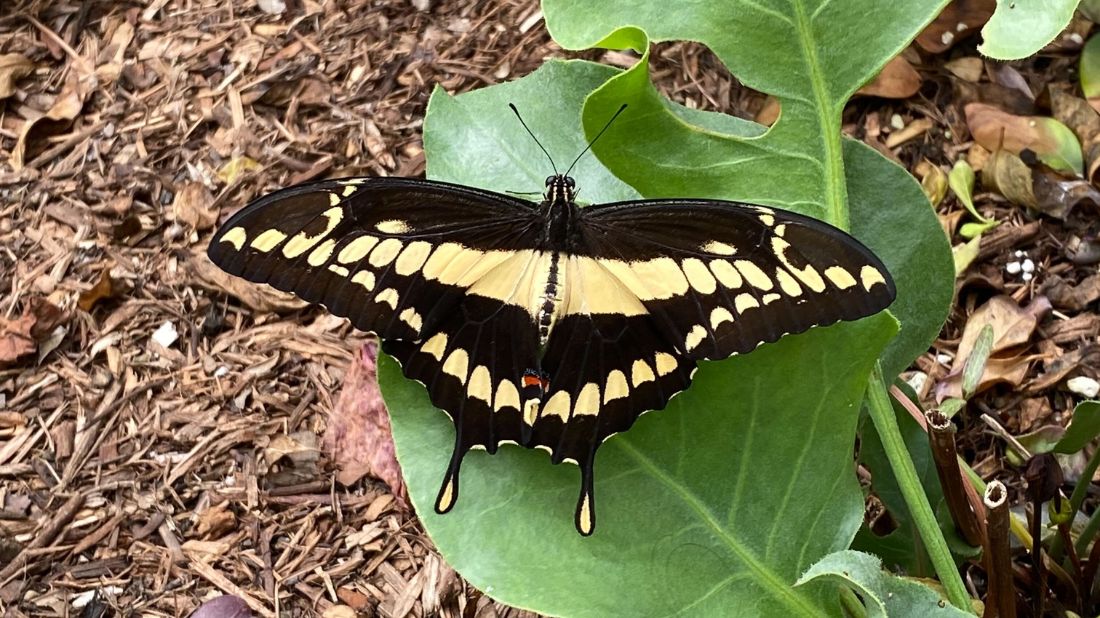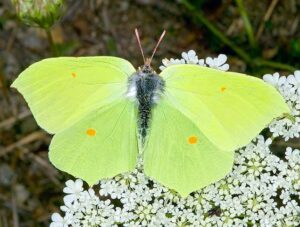Description:The giant swallowtail is the largest butterfly in Missouri. The overall color of wings (top side) and body is dark blackish brown, with bands composed of several yellow spots. There is a yellow spot at the tip of each hindwing “tail.” The undersides of wings are primarily yellow, with black, blue, and red markings. There are yellow stripes on the abdomen.
The caterpillars vary depending on stage of development. They mimic bird droppings. Overall, the coloring is brown with grayish-white markings, a patch at the end of the abdomen, and a wide saddle mark of the same color in center of the body. The osmeterium (a paired, hornlike appendage that protrudes when the larva is disturbed) is pinkish or red.
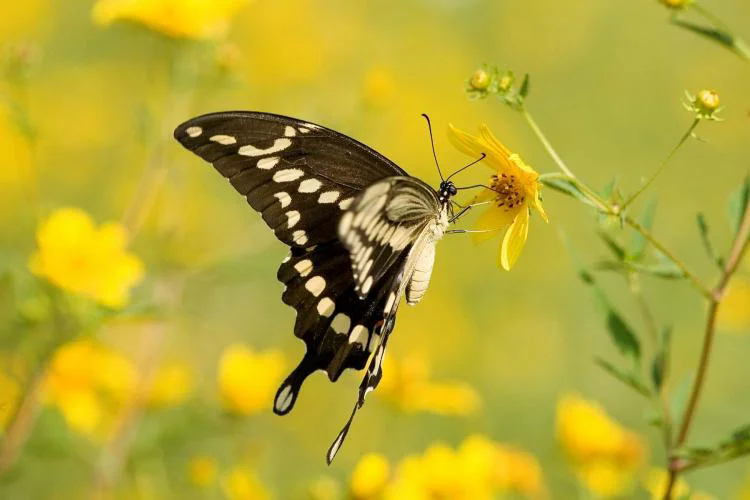
Taxonomy:Animalia, Arthropoda, Hexapoda, Insecta, Lepidoptera, Papilionidae, Papilioninae
Subfamily: Papilioninae
Identification: Forewing with diagonal band of yellow spots. Tails are edged with black and filled with yellow.
Wing Span: 4 – 6 1/4 inches (10.2 – 16 cm).
Life History: Males patrol for receptive females. Females lay single eggs on host leaves and twigs. Caterpillars resemble bird droppings and eat leaves and young shoots. Chrysalids hibernate.
Flight: Two in the north from May-September; all year in Florida and the Deep South.
Caterpillar Hosts: Trees and herbs of the citrus family (Rutaceae) including Citrus species, prickly ash (Zanthoxylum americanum), hop tree (Ptelea trifoliata), and Common Rue (Ruta graveolens).
Adult Food: Nectar from lantana, azalea, bougainvilla, bouncing Bet, dame’s rocket, goldenrod, Japanese honeysuckle, and swamp milkweed.
Habitat: Many locales including rocky and sandy hillsides near streams or gullies in the north; pine flats, towns, and citrus groves in the south.
Range: Throughout eastern North America west to the Rocky Mountains, south through the desert Southwest to South America. A rare stray to Quebec, North Dakota, and Bermuda.
Conservation: Not required in the United States.
NCGR: G5 – Demonstrably secure globally, though it may be quite rare in parts of its range, especially at the periphery.
Management Needs: Caterpillars (“orange dogs”) are occasional pests of citrus.
Giant Swallowtail Butterfly
Giant Swallowtail Butterfly Coloration and Size
The Giant Swallowtail (Papilio cresphontes) is the largest of all North American butterflies although female Tiger Swallowtails approach the same size.
Both male and female have dark brown wings with yellow markings, including a large horizontal yellow strip across the wings. The underside and body are mostly yellow.
Its size is typically in the 4.0″ – 6.0″ range.
Giant Swallowtail Distribution and Habitat
This swallowtail ranges throughout much of the Eastern United States, and is less common in the American Southwest and southern California. It typically stays close to wooded areas, and close to the ground. In a typical year 2-3 broods are produced.
It can often be found in woodland areas and residential gardens.
Nectar and Host Plants Used by the Giant Swallowtail
Some of the favorite nectar plants of the Giant Swallowtail are Milkweed, Lantana, Butterfly Bush, Zinnias, and many others.
Favorite host plants include citrus, lime, Hercules Club (Zanthoxylum clava-herculis), prickly ash, citrus, lime, herb rue, hoptree, and wild lime.
Fun Facts
- Giant swallowtails are the biggest butterflies in North America, which means you may be able to see one in the wild in different parts of the United States
- They live for about two-three weeks
- As adults, they enjoy nectar from various plants including milkweed, lantana, butterfly bush and zinnias
- As caterpillars, they can be found munching on citrus tree foliage
- They are called “swallowtails” because the tails at the end of their hindwings look like the forked tails of swallows, a bird that is found around the world
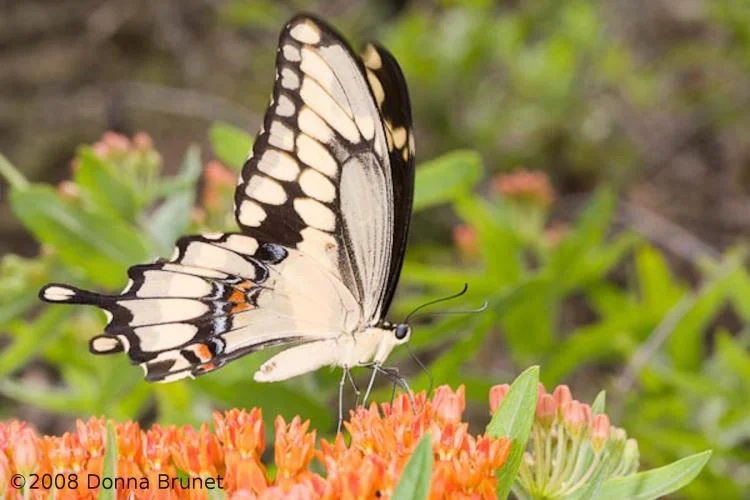
Giant Swallowtail Butterfly
Common Name: Giant Swallowtail Butterfly
Scientific Name: Papilio cresphontes Cramer [Sometimes the genus Heraclides is used.]
Order: Lepidoptera
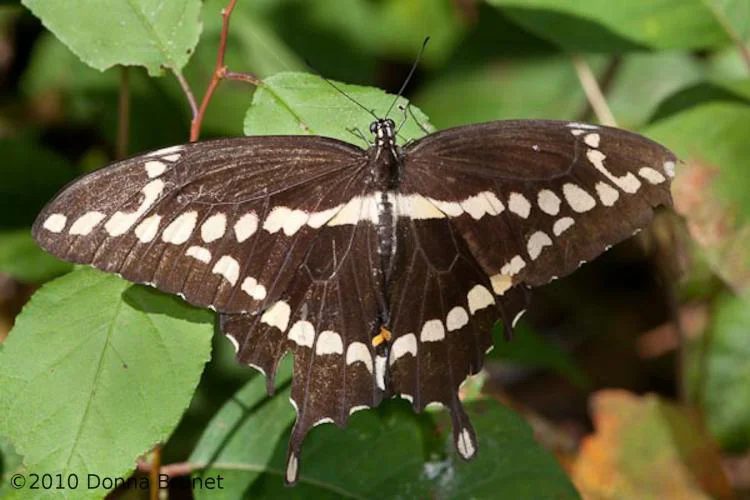
Description: This adult butterfly is one of the largest swallowtail species, with a wingspan of up to 6 inches. Wings are black with yellow markings near wing margins and spots forming a diagonal band across the fore wings. Caterpillars are dark brown with creamy white mottled markings, making them appear much like bird droppings. When disturbed, caterpillars display a pair of horn-like, orange glands (osmeteria) which emit a foul smell.
Other black and yellow swallowtail butterflies include the common tiger swallowtail, Pterourus (Papilio) glaucus (Linnaeus), which has a 3-1/2 to 4 inch wingspan and fore wings that are mostly yellow and marked with 4 black lines and wing margins. Females occur in two forms (dimorphic), one similar to the male but with larger blue markings on the hind wings, and the other an all black form with similar blue markings on the hind wings.
A remarkably similar species is the “two-tailed swallowtail”, Pterourus (Papilio) multicaudatus (Kirby); although this species has reduce black stripe markings and each hind wing has two well-developed tails rather than one. It is more common in the canyon bottoms of west Texas.
In the swampy woods of eastern Texas Gulf Coast counties, the palamedes swallowtail, Pterourus (Papilio) palamedes (Drury), is a common black-brown swallowtail with yellow markings forming a band near the middles of the wings (made of spots on the fore wings but solid on the hind wing) and crescent-shaped spots closer to and along the wing margins. Like the black and blue spicebush swallowtail, Pterourus (Papilio) triolus (Linnaeus), caterpillar stages feed on sassafras. However, caterpillars of the latter also feed on spicebush and are marked with two pairs of large black-ringed and yellow-orange eyespots (first pair black in center and second lacking center spot) and smaller black-ringed blue spots along the body. They roll up leaves to make nests for hiding.
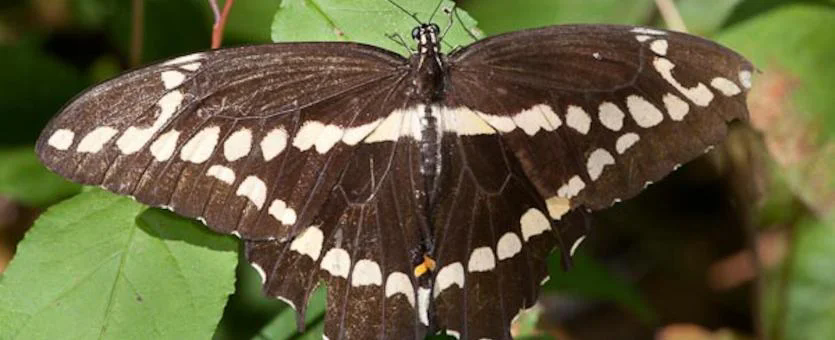
Life Cycle: Adult females lay yellow-green eggs singly on host plants. Caterpillars hatch and develop through several stages (instars) before forming a chrysalis or pupa, which is attached to the host plant by the back end and held in an upright position by a silk thread around the middle.
Habitat and Food Source(s): Caterpillars feed on leaves of host plants including citrus; gas plant, Dictamnus; prickly ash, Xanthoxylum sp.; and rue, Ruta graveolens.
Pest Status: Caterpillars feed on leaves of citrus.
Life Cycle: From Caterpillar to Butterfly
The life cycle of the Giant Swallowtail butterfly is a remarkable example of complete metamorphosis, encompassing four distinct stages: egg, caterpillar (larva), pupa (chrysalis), and adult butterfly. Each stage plays a crucial role in the development of this magnificent butterfly:
Egg Stage: The cycle begins when the female Giant Swallowtail lays her eggs, typically on the leaves of host plants like citrus trees or rue. The eggs are small and spherical, usually yellowish or orange in color. The caterpillar can become a significant pest in citrus farms, which earned it the names orange dog or orange puppy.
Caterpillar Stage: Once the eggs hatch, the caterpillar emerges. These larvae are unique in appearance, resembling bird droppings as a form of camouflage to protect against predators. They feed voraciously on the leaves of their host plants, growing rapidly and molting several times.
Pupa Stage: After reaching a certain size and developmental stage, the caterpillar forms a chrysalis. This pupa stage is a time of significant transformation, where the organism reorganizes into the adult butterfly. The chrysalis is typically brown or green, blending into the surrounding environment.
Adult Butterfly Stage: The final stage is the emergence of the adult Giant Swallowtail butterfly. Distinguished by its large size and striking black and yellow markings, the butterfly will allow its wings to dry and harden after emerging from the chrysalis. Once its wings are fully expanded and dry, the butterfly begins its life of flight, feeding on nectar from various flowers.
The duration from egg to adult butterfly can vary but typically spans several weeks to a couple of months, depending on environmental conditions like temperature and food availability. The Giant Swallowtail can have multiple generations yearly, especially in warmer climates. Each stage of this life cycle contributes to the survival and success of the species in its environment.
Regions: Where to Find Giant Swallowtail Butterflies
The Giant Swallowtail, known as the largest butterfly in North America, is predominantly found in various regions across the eastern part of the continent. Its range includes:
Eastern North America: The butterfly is abundant in many areas of eastern North America, where it is a common sight in various habitats.
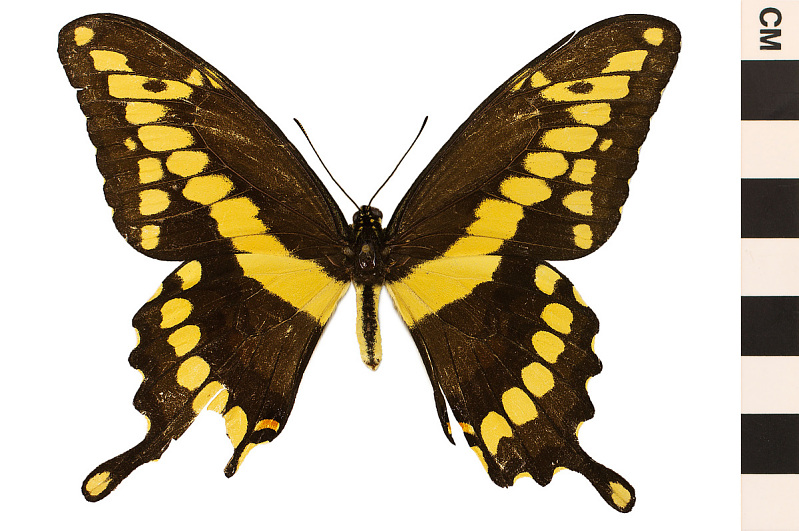
United States: Within the United States, it is especially prevalent in the southeastern states but extends northward to parts of New England and the Great Lakes region.
Canada: In Canada, the Giant Swallowtail’s range includes southern areas of Ontario and Quebec, where it has been observed more frequently in recent years.
Habitats: This species thrives in diverse environments, including woodlands, citrus groves, gardens, and wetlands, particularly where host plants for their larvae, such as citrus trees, rue, and prickly ash, are available.
It’s important to note that populations of swallowtails found in western North America and extending into Panama, previously considered part of Papilio cresphontes, have been reclassified as a separate species, Papilio rumiko, as of 2014. This reclassification highlights the dynamic nature of species identification and distribution in entomology.

